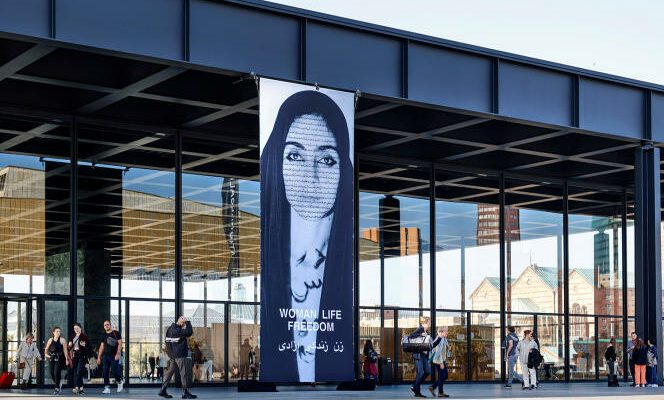Eyes lined with Khôl, long loose hair, a naked woman dances in a dungeon under the gaze of her jailers in uniform. His body bears the marks of beatings. He wobbles, falls, before resurfacing staggering in a street thousands of miles away, probably in the United States. Barely Shirin Neshat, 65, she posted on January 12, on Instagram, the trailer for her new video called The Furywhich will be screened in its entirety at Gladstone, his New York gallery, from January 26, that the most famous Iranian artist abroad suffered a rain of criticism on social networks.
“Really awful work”, Kaveh Abbasian immediately protested on Twitter. The Iranian filmmaker based in London even accuses him of plagiarizing scenes from the films Salò or the 120 Days of Sodom (1975), by Pier Paolo Pasolini, and Night porter (1974), by Liliana Cavani. “Shirin Neshat is an orientalist and anti-feminist who, by appropriating the bodies of Iranian women, has become rich and famous in the West”, accuses on January 16 on Facebook the anthropologist Shahram Khosravi, teacher at the University of Stockholm. The controversy might sound like picrocholine. It exposes a battle of images and a conflict of generations within the opponents of the Islamist regime.
The bronca began in November 2022, when as a sign of solidarity with the Woman, Life, Freedom movement, the Neue Nationalgalerie in Berlin hung a photo of Shirin Neshat as a banner. Title Unveiling, it comes from the “Women of Allah” series, portraits of veiled fanatics, weapons in hand, their faces inscribed with Persian poetry.
Images deemed insulting
Appreciated by the Western art market, these images are considered anachronistic or, worse, insulting, by part of the youth. “The black chador does not represent the Iranian women who fight against every inch of this veil, protests filmmaker Parisa Ghassemi, who runs a short film festival in Linz, Austria, on the phone. Shirin Neshat chooses to show the women in a victim posture, which undermines the fight that is currently being waged. »
“We do not recognize ourselves in these images, rebounds Niusha Ramzani, a young Iranian artist and social worker who lives in Berlin. Shirin Neshat has always made Iranian women an exotic object of desire, a passive being, a mysterious victim in an unjust world. » At the antipodes of the communication of rebellious young people who continue to post on Instagram images full of courage, hope and challenge. “The art scene is in the streets, the universities and the cemeteries”, insists the Iranian artist Barbad Golshiri, who believes that “The works made by art students for this revolution are far more important, profound and meaningful than ‘Women of Allah'”.
You have 46.16% of this article left to read. The following is for subscribers only.
